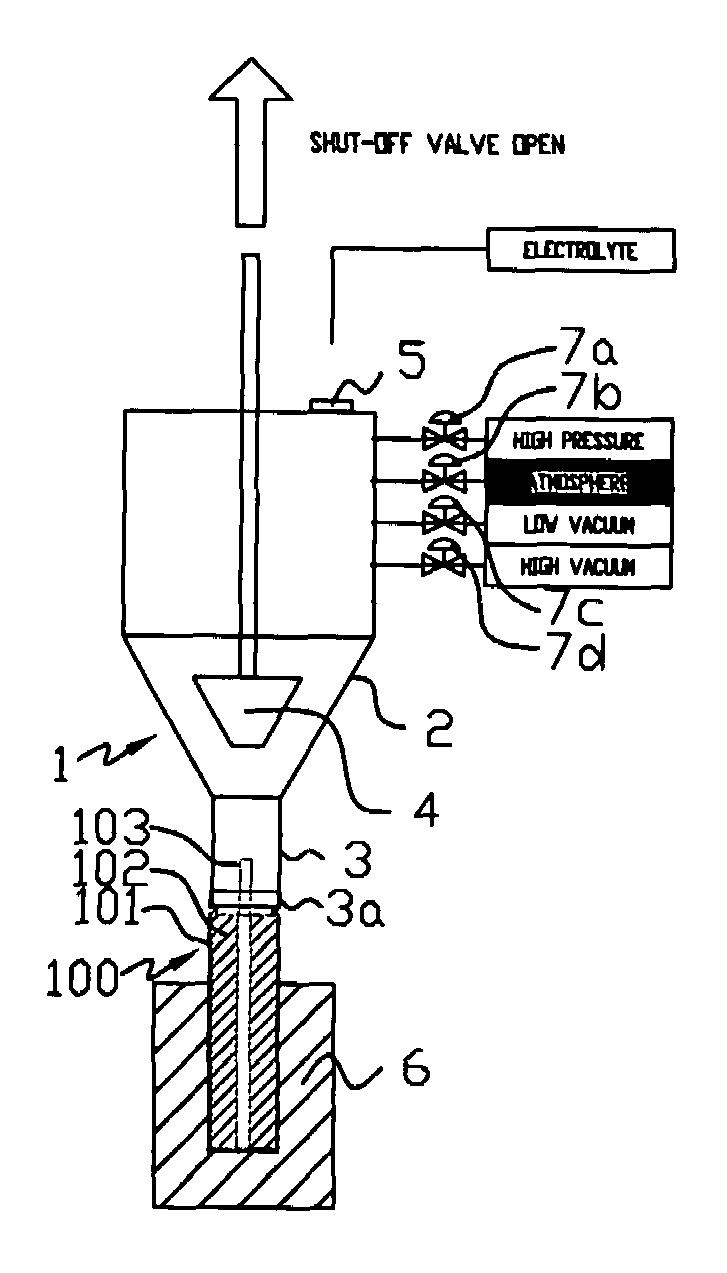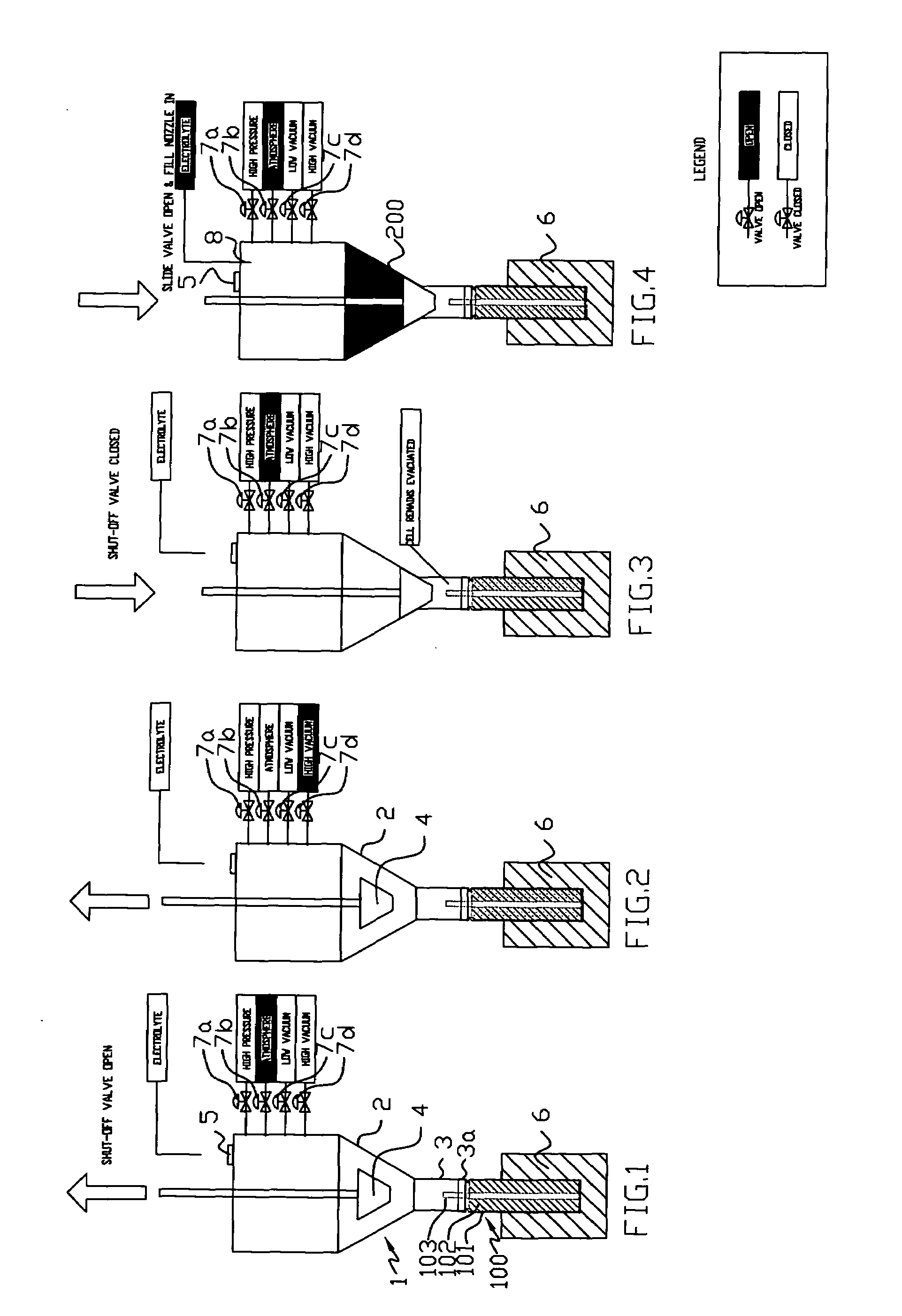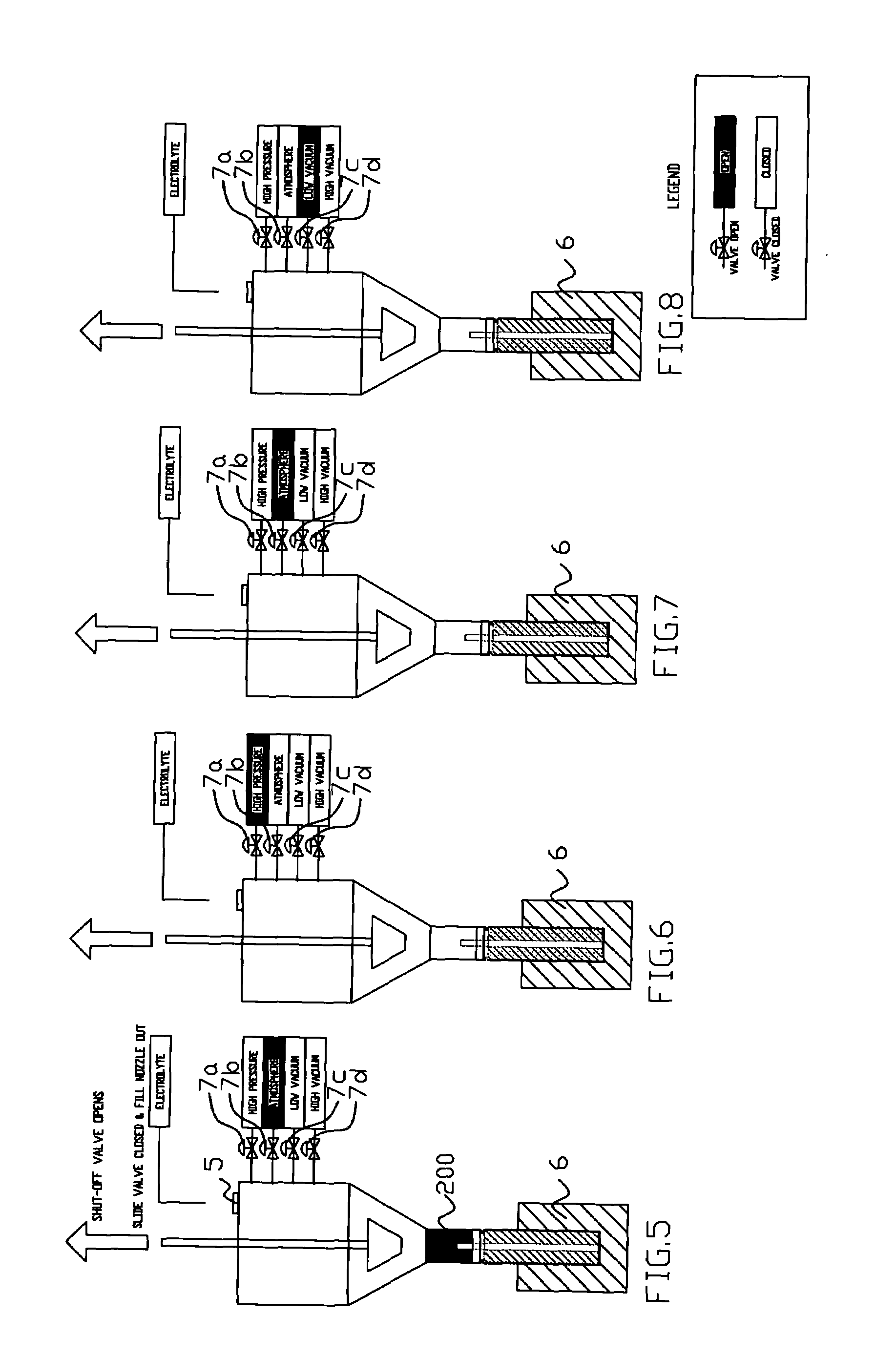Method for filling electrolyte into battery cell and apparatus for carrying out the method
a battery cell and electrolyte technology, applied in the direction of cell components, liquid handling, packaging goods types, etc., can solve the problems of long time required for completely exhausting the void, large number of small voids, so as to achieve the effect of further increasing the filling speed
- Summary
- Abstract
- Description
- Claims
- Application Information
AI Technical Summary
Benefits of technology
Problems solved by technology
Method used
Image
Examples
Embodiment Construction
[0037]In FIGS. 1 to 8 eight discrete steps of the electrolyte filling method according to the invention has been schematically illustrated. Each of these schematic drawings show the same electrolyte fill head 1 as coupled to a battery cell 100 which is kept securely in a cell support 6. The electrolyte fill head 1 comprises a pre-metering chamber 2, a cell size specific adapter nozzle 3, an elastomer seal 3a engaging with an appropriate connection element of the battery cell 100, a shut-off plunger 4, a slider plate valve 5, an electrolyte fill port 8 with an O-ring seal around its top circumference (see FIG. 4) and four commercial pressure valves 7a-d such as SS-8BK-1C from the Swagelok company. The pressure valves 7a-d have respective first sides communicating with the interior of the pre metering chamber well above the zone of movement of the shut-off plunger 4. The other sides of the valves 7a-d are coupled to different pressure or vacuum means as illustrated by the correspondin...
PUM
| Property | Measurement | Unit |
|---|---|---|
| pressure | aaaaa | aaaaa |
| pressure | aaaaa | aaaaa |
| pressure | aaaaa | aaaaa |
Abstract
Description
Claims
Application Information
 Login to View More
Login to View More - R&D
- Intellectual Property
- Life Sciences
- Materials
- Tech Scout
- Unparalleled Data Quality
- Higher Quality Content
- 60% Fewer Hallucinations
Browse by: Latest US Patents, China's latest patents, Technical Efficacy Thesaurus, Application Domain, Technology Topic, Popular Technical Reports.
© 2025 PatSnap. All rights reserved.Legal|Privacy policy|Modern Slavery Act Transparency Statement|Sitemap|About US| Contact US: help@patsnap.com



